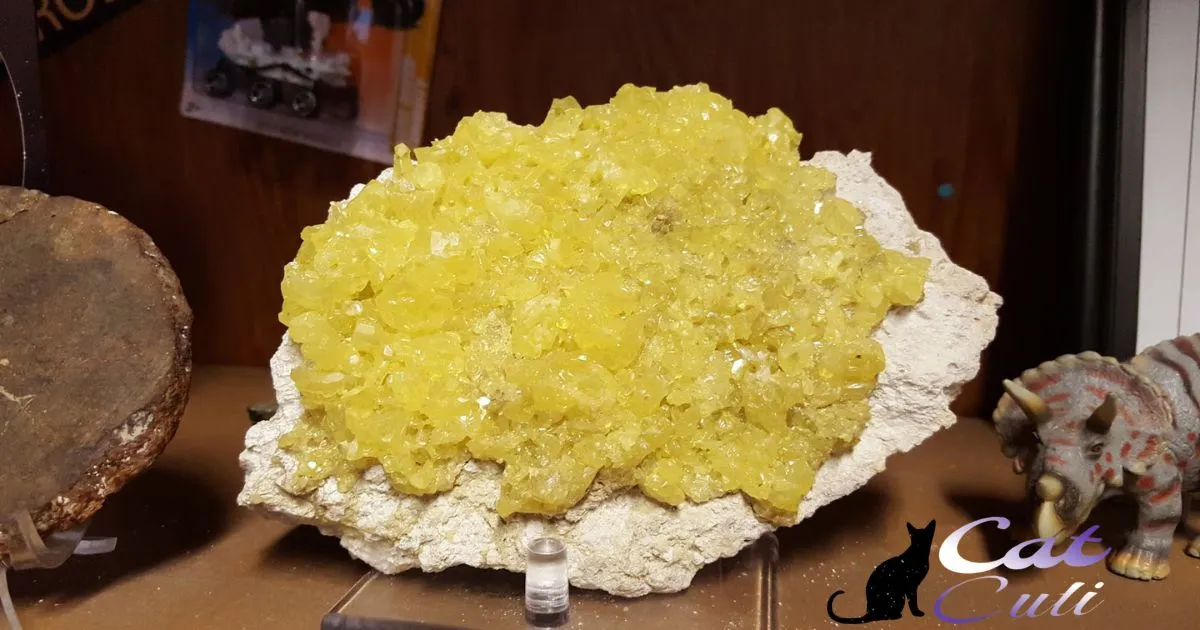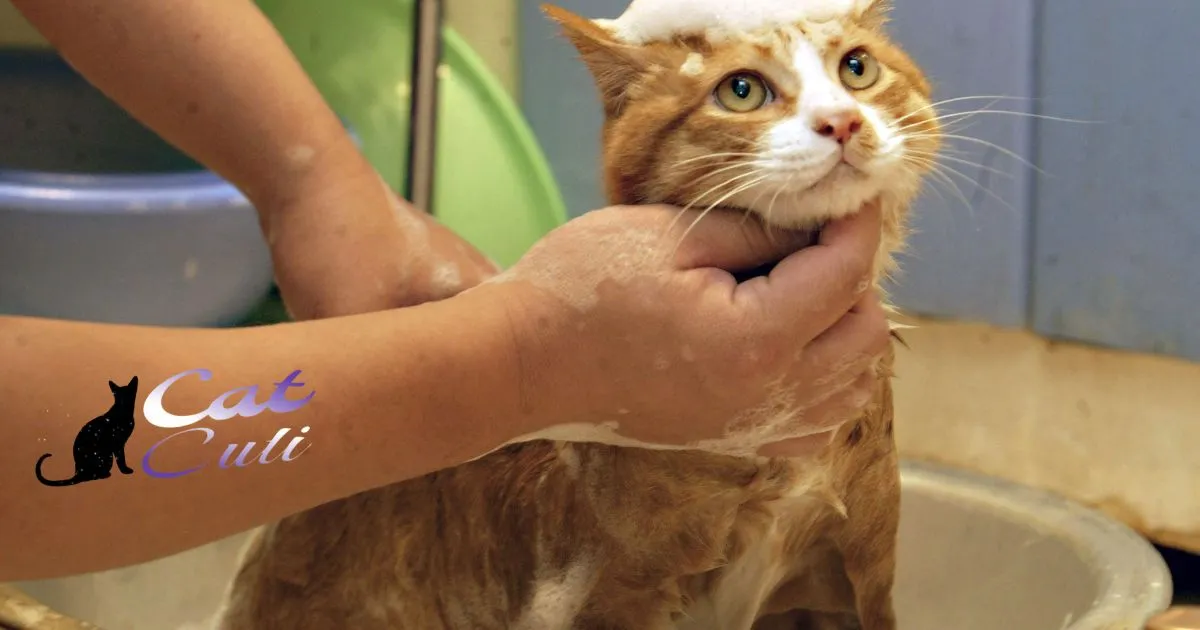Lime sulfur dips leave cats with an unpleasant rotten egg smell, making owners ask the critical question – when can I bathe my cat after a lime sulfur dip? This sulfur-based solution is often used to treat fungal infections, ringworm, mange and other skin conditions in cats. However, the smell left behind creates an urgent need for a follow-up bath.
Bathing too soon can reduce effectiveness by washing away the solution before it has done its job. The proper waiting period allows for full treatment while a well-timed follow-up bath helps return the cat’s coat to normal grooming and a fresh scent.
Check with your vet on timing and properly diluting the dip solution. Monitor the cat’s skin condition and comfort level to determine optimal bathing frequency. While the initial dip causes an unpleasant odor, a properly timed follow-up bath returns cats to both skin health and a normal, appealing scent.
Bathe My Cat After Lime Sulfur Dip
Lime sulfur dips are commonly used to treat skin conditions in cats, but they leave behind an unpleasant sulfur smell. So when can you bathe a cat to remove the odor while still allowing the medication to work?
What is a Lime Sulfur Dip?
A lime sulfur dip is a topical solution used to treat skin infections, ringworm, mange, and other parasites in cats. The active ingredients – sulfur and lime – work together to kill fungus, bacteria, and mites living on a cat’s skin.
Veterinarians typically prescribe a series of lime sulfur dips, such as once a week for 6 weeks, to fully clear up stubborn skin conditions.
Why Lime Sulfur Dips Smell Bad
While lime sulfur dips are effective at treating skin problems, they come with an unpleasant rotten egg odor from the sulfur that understandably makes owners eager to bathe their cats.
Most cats hate the dip application process and the lingering smell. But it’s important not to bathe off the medication too soon or it will not have time to fully absorb and work.
Lime Sulfur Dip For Cats Side Effects
Lime sulfur dips can help treat skin conditions in cats. But the dip has some side effects to watch for. These include skin dryness, fur staining, and a bad sulfur smell.
The table below shows the main side effects and what to do:
| Side Effect | Description | Solution |
| Skin Dryness | Dip causes temporary irritation and flaking | Add moisturizing baths |
| Staining | Solution can stain fur yellow, orange, or green | Fades over time |
| Sulfur Smell | Rotten egg odor clings to fur | Bath 2 days after dip |
The smell and staining are temporary. But contact your vet if dryness or irritation worsens. Stop dipping if the cat is very distressed. Discuss options like pills or other dips if problems occur.
When Can You Bathe a Cat After Lime Sulfur Dip?
Most vets recommend waiting 24-48 hours before bathing a cat after a lime sulfur dip treatment.
Bathing too soon can strip away the medication before it has fully absorbed into the cat’s skin and done its job.
Factors That Influence Timing
- Concentration of dip: Stronger concentrations take longer to absorb.
- Frequency of dips: More frequent dips may allow shorter waits between baths.
- Condition being treated: More stubborn conditions may need longer dip absorption times.
- Cat’s response: Cats who show irritation may need earlier baths for comfort.
Consult with your veterinarian on the specific wait time required between dips and baths for your cat.
How Long Does Lime Sulfur Dip Take To Dry

The lime sulfur dip solution needs time to dry on a cat’s skin. The drying process allows the sulfur and lime to fully absorb. Most vets say to let the dip dry completely before rinsing or wiping a cat’s skin. This takes at least 24 hours. Drying also lets the dip work to treat ringworm, mange, and other skin issues.
Chewing On Fake Christmas Tree can be an unexpected challenge when it comes to drying your cat after a bath. Many factors impact the dip drying time, such as solution strength, fur length, temperature, and humidity. Long-haired cats, especially those with a penchant for Chewing On Fake Christmas Tree, may require additional drying time.
How to Bathe a Cat After Lime Sulfur Dip
Once the appropriate waiting period has passed, you can bathe your cat to remove the sulfur smell and soothe their skin. Here are some best practices:
Supplies Needed
- Mild cat shampoo
- Washcloth
- Towels
- Basin or sink filled with lukewarm water
Bathing Steps
- Brush the cat’s coat to remove loose hair that could clog drains.
- Wet coat thoroughly with lukewarm water avoiding face and ears.
- Apply a small amount of mild cat shampoo.
- Work shampoo gently into lather over the entire coat except for face and ears.
- Rinse thoroughly until water runs clear.
- Dry with a towel and allow the cat to finish air drying.
Tips for a Calm Bath
- Trim claws to avoid scratches
- Use calm voice and gentle strokes
- Give treats during and after
- Avoid getting water or soap near face/ears
- Stop if cat shows signs of distress
Where Can I Buy Lime Sulfur Dip For Cats
You can buy lime sulfur dip at feed stores, pet stores, and from online retailers. Major pet retailers like PetSmart and Petco carry various brand name lime sulfur dips for cats. These are often cheaper than buying from a vet clinic.
Online sites like Amazon, Chewy, and Revival Animal Health also sell lime sulfur dip. Make sure to check product reviews and descriptions. Purchase the dip made specifically for cats and dogs. Some brands offer different strengths, so choose mild or sensitive formulas if it’s your cat’s first dip.
Buy from trusted brands recommended by your vet. Prices range from $15 to $30 per bottle. Check expiration dates before use. Properly stored, unopened bottles last for a few years. Buying the right lime sulfur product ensures you can safely and effectively treat your cat’s skin condition at home.
Monitoring After Dips and Baths
While a properly timed bath removes the smell, it’s important to continue monitoring your cat after lime sulfur treatments.
- Watch skin for any reactions suggesting an allergy
- Ensure the skin condition improves over subsequent dip treatments
- Limit bath frequency to avoid over-drying the skin
- Contact vet if odors or skin condition worsen
Careful attention ensures your cat heals while staying comfortable after each dip and bath.
When Can a Cat Resume Normal Activities After a Dip?
Lime sulfur dips involve harsh chemicals and can be taxing on cats. Most vets recommend limiting a cat’s activity 24-48 hours after a dip to allow it to fully absorb and avoid rubbing it off.
Precautions After Dips
- Keep cat indoors to prevent dirt contact
- Limit playtime and petting
- Use an e-collar if licking is an issue
- Avoid using topical flea/tick medication
Cats can typically resume normal activities and grooming once the post-dip bath has been given. But continue monitoring for any skin irritation or reactions.
Is Ringworm Contagious After Lime Sulfur Dip
A lime sulfur dip can help treat ringworm. But it may not make a cat totally non-contagious. The dip kills many fungi on the skin and coat. But spores could still shed after dipping. So mild contagion is possible for days after.
Ask your vet how long contagion lasts post-dip. Avoid contact with other pets for a week post-dip. Restrict a cat’s movement at home too. Thoroughly clean any bedding daily. And limit petting or cuddling. Wash hands if you must touch the cat. Continue all precautions until skin heals fully. That confirms the cat won’t spread more spores.
Alternatives to Lime Sulfur Dips

While lime sulfur dips are effective, some cats have reactions or intolerances to them. Discuss options with your vet, but alternatives may include:
- Antifungal or antibiotic pills – Oral medication for ringworm and infections
- Topical skin solutions – Miconazole and chlorhexidine shampoos
- Flea medications – Such as Revolution treat mites and parasites
- Immune supplements – Such as Zylkene and lysine help skin heal
Your vet can advise you on the best treatment options if your cat struggles with lime dips.
The Takeaway
Lime sulfur dips make cats smell bad but treat skin conditions effectively. Allowing 24-48 hours before a follow-up bath gives the medication time to work while removing the odor sooner.
Pay close attention to your cat’s skin health and comfort throughout the dipping and bathing process. With the right timing, a lime sulfur dip can resolve stubborn skin issues in cats while a well-planned bath makes the smell temporary.








